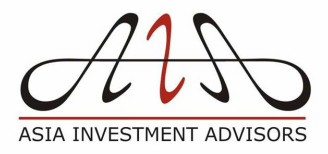Originally published on April 23, 2013
Today's Bloomberg article draws attention to the practice in the Asian USD bond market of paying incentives to private banks to distribute new bond issues to their clients.
Over the years, private banks have subscribed to a rising share of new USD bonds from Asia. Before GFC, when equities used to be hot, private banks' share of subscriptions to new bonds used to be 3%-8%. After GFC, the figure has risen substantially to reach 16% for 2012 and 18% for 2013 so far. Undoubtedly, private wealth has discovered a new love for bonds. We must view the importance of the private banking subscriptions to new issues in this context.
Private banks have become key buyers for all bonds, but more so in case of high-yield bonds. They took 29% of high-yield issues this year, but only 11% of investment-grade issues, up from 25% for high-yield and 12% for investment-grade issues last year.
In some issues, particularly unrated or high-yield bonds, allocations to private banks are so large that one wonders if the issues would have managed to get out the door without them. Consider these, for example: Private banks took 24% of First Pacific's 10 year bond, 37% of Bank of Ceylon's 5-year issue, 39% of Suzlon Energy's 5-year issue, 37% of Shun Tak Holdings' 7-year issue, 55% of Guangzhou R&F's 7-year issue, and 42% of Lai Sun's 5-year bond. (These are only some examples from this year, not a complete list of bonds with high private bank participation!)
In most of the perpetual bond issues, private banking clients have contributed a large chunk of demand: 48% of Beijing Capital Land, 76% of Agile Properties, 60% of Cheung Kong Holdings, 53% of Reliance Industries, 76% of Petron - all examples from this year alone. (It is another matter than many of these are trading below issue price - see my article about the risks in perpetual bonds.)
The level of private banking incentives has also changed with the market. In a "hot" market, where new issues are flying off the door and recently issued bonds are trading above the issue price, the incentive could be 25 cents; but last year, in times of market stress, the incentive is known to have gone up to 75 cents or even a dollar in some cases.
Given the the rising clout of private banks, it is no surprise that issuers and bankers are willing to pay them an incentive to distribute their bonds, and consider such incentives to be a cost of raising funds. I see little scope for this practice to change any time soon. Private banks will continue to play a significant role in Asian bond markets for a while yet. Issuers will have to just grin and bear it.
Over the years, private banks have subscribed to a rising share of new USD bonds from Asia. Before GFC, when equities used to be hot, private banks' share of subscriptions to new bonds used to be 3%-8%. After GFC, the figure has risen substantially to reach 16% for 2012 and 18% for 2013 so far. Undoubtedly, private wealth has discovered a new love for bonds. We must view the importance of the private banking subscriptions to new issues in this context.
Private banks have become key buyers for all bonds, but more so in case of high-yield bonds. They took 29% of high-yield issues this year, but only 11% of investment-grade issues, up from 25% for high-yield and 12% for investment-grade issues last year.
In some issues, particularly unrated or high-yield bonds, allocations to private banks are so large that one wonders if the issues would have managed to get out the door without them. Consider these, for example: Private banks took 24% of First Pacific's 10 year bond, 37% of Bank of Ceylon's 5-year issue, 39% of Suzlon Energy's 5-year issue, 37% of Shun Tak Holdings' 7-year issue, 55% of Guangzhou R&F's 7-year issue, and 42% of Lai Sun's 5-year bond. (These are only some examples from this year, not a complete list of bonds with high private bank participation!)
In most of the perpetual bond issues, private banking clients have contributed a large chunk of demand: 48% of Beijing Capital Land, 76% of Agile Properties, 60% of Cheung Kong Holdings, 53% of Reliance Industries, 76% of Petron - all examples from this year alone. (It is another matter than many of these are trading below issue price - see my article about the risks in perpetual bonds.)
The level of private banking incentives has also changed with the market. In a "hot" market, where new issues are flying off the door and recently issued bonds are trading above the issue price, the incentive could be 25 cents; but last year, in times of market stress, the incentive is known to have gone up to 75 cents or even a dollar in some cases.
Given the the rising clout of private banks, it is no surprise that issuers and bankers are willing to pay them an incentive to distribute their bonds, and consider such incentives to be a cost of raising funds. I see little scope for this practice to change any time soon. Private banks will continue to play a significant role in Asian bond markets for a while yet. Issuers will have to just grin and bear it.

 RSS Feed
RSS Feed
